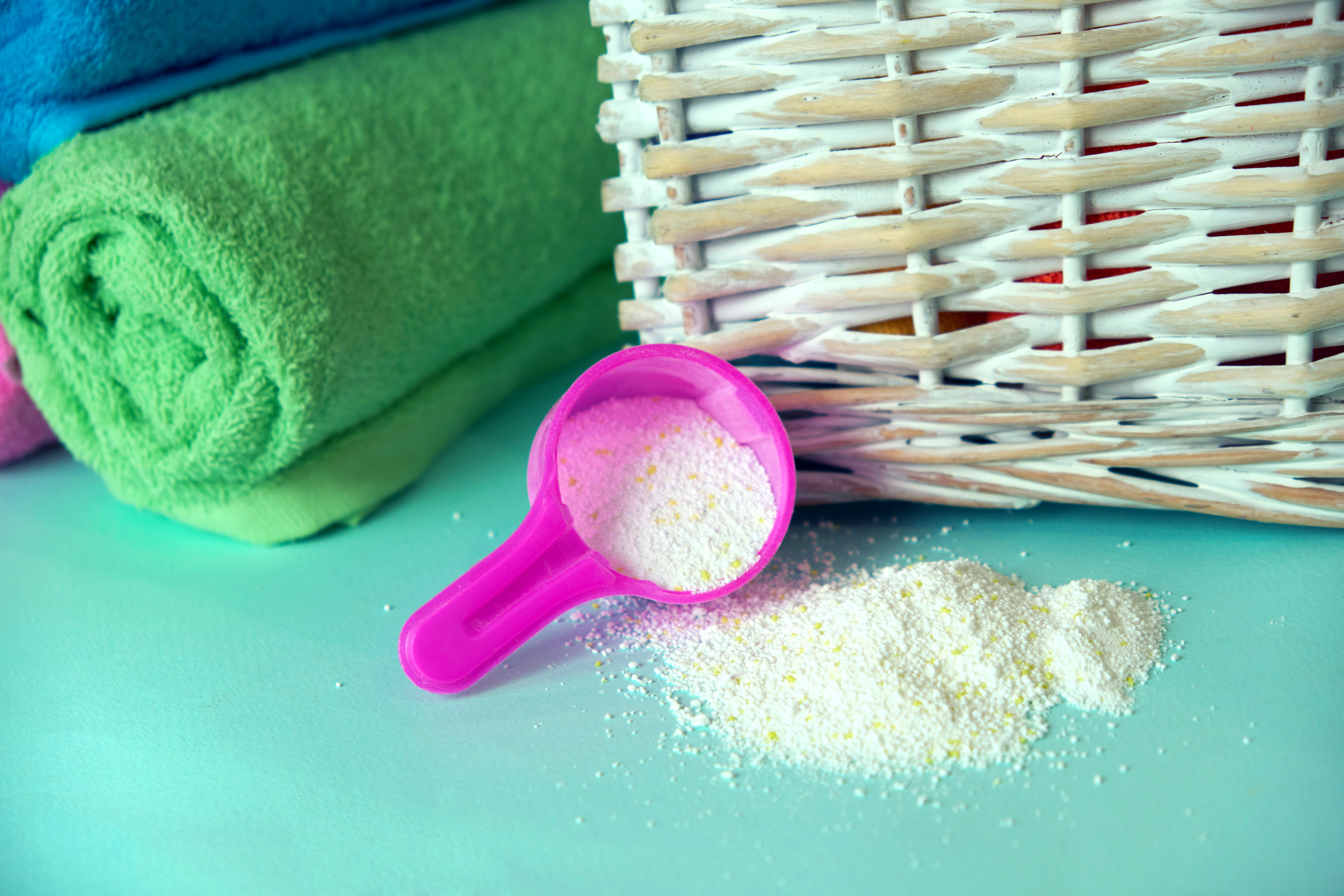
We all trust our laundry detergents to make our clothes clean, but did you know some laundry detergents may be quietly harming your skin, hormones, and even the planet? With reports of rashes, respiratory issues, and hidden toxins, knowing which detergents to avoid is more essential than ever. Here are five common detergent ingredients that can be extremely harmful.
1. Detergents with 1,4-Dioxane
1,4-Dioxane is a likely human carcinogen and a common contaminant in synthetic detergents. It can be absorbed through your skin or inhaled during laundry, increasing cancer risk over time allure.com+2rinse.com+2bhg.com+2. This chemical often isn’t listed on labels, making it hard for consumers to spot. Even well-known brands may contain trace amounts due to their use in processing surfactants. To stay safer, look for detergents certified free from 1,4-dioxane by organizations like EPA Safer Choice.
2. Detergents Containing Synthetic Fragrances
Many laundry detergents are loaded with synthetic fragrances that mask odors, but these are often endocrine disruptors and irritants. One Reddit user warned, “The most toxic ingredients… are the fragrances, and dyes” that remain in our fabrics long after washing. Fragranced detergents can trigger asthma, hormone disruption, and skin rashes. Choosing scent-free or hypoallergenic formulas is an easy swap for sensitive households.
3. Surfactants like SLES and SLS
Surfactants such as Sodium Laureth Sulfate (SLES) and Sodium Lauryl Sulfate (SLS) make detergents foam, but they can irritate skin, and sometimes contain carcinogenic impurities. In washing machines, residue may cling to clothes and affect sensitive users. They’re also harmful to aquatic life once rinsed down the drain. For gentler cleaning, pick detergents labeled “plant-based surfactants” or check for eco labels.
4. Optical Brighteners & Dyes
Optical brighteners make whites look whiter, but they do nothing to clean, and they can irritate skin and persist in waterways. Synthetic dyes likewise don’t aid cleaning and increase reactive chemical exposure in fabrics. Many people with sensitive skin or allergies unknowingly react to these additives. A safer option? Choose products clearly labeled dye‑free and optical‑brightener‑free for peace of mind.
5. Phosphates and Quaternary Ammonium (Quats)
Some detergents still include phosphates or quats to soften water or kill bacteria, but both carry hidden risks. Phosphates lead to toxic algae blooms and environmental harm. Quats, found in softeners and scent boosters, can aggravate asthma and persist in ecosystems. Because of these concerns, many brands are phasing out phosphates—but to be sure, check labels for “phosphate‑free” and avoid products listing quats or “fabric sanitizer.”
Choosing Safer Laundry Detergents
- Look for hypoallergenic, fragrance‑free formulas (e.g., All Free Clear, Seventh Generation, Molly’s Suds).
- Prioritize EPA Safer Choice or EWG-verified products to avoid hidden toxins.
- Read labels—steer clear of chemicals like 1,4-dioxane, SLS/SLES, optical brighteners, dyes, phosphates, and quats.
- Use cold water washes and detergent strips to reduce chemical concentrations in each load.
- Test new detergents on a small patch of skin or clothing before switching fully, especially if you have allergies.
Why Switching Matters
Every day exposure to harsh chemicals can cause real health issues—from skin rashes to respiratory distress—and even impact aquatic ecosystems. Choosing safer laundry detergents isn’t just about clean clothes; it’s about cleaner biology and a cleaner planet. With simple label reading and smart product swaps, you can reduce toxic exposure without losing performance or convenience.
Take Control of Your Laundry Routine
Stop letting chemical-laden detergents sneak into your home. Take a moment to review what you’re using now and swap to safer alternatives that are better for you—and the Earth. With just a few changes, your laundry routine can be healthier, greener, and more thoughtful. Here’s to fresh clothes—and a fresher conscience.
Have you switched to a safer laundry detergent yet? Tell us your experience—or ask for product recommendations in the comments below!
Read More
New Study: Body Fat Beats BMI in Gauging Health Risks
Why Don’t Personal Finance Books Ever Mention Mental Health?







